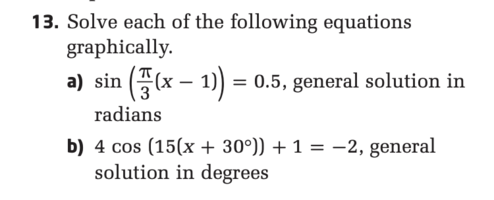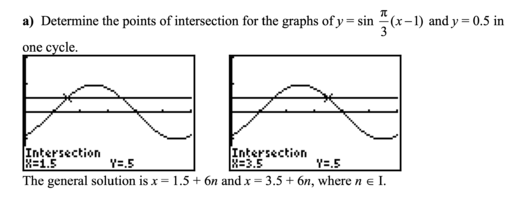I was doing this question, and I got the right answer for the solutions themselves. However, generally, our teacher always told us that a general solution is something along the lines of x+n2pi, n E I (where x is one solution). However, when I went to check whether I got the right answer or not, I realized that the 2npi pattern doesn't work here, and the solution is x+6n (where x is one solution). Why is that? Why is the pattern different for this question than the ones my teacher was talking about? How can you know when to use 2npi and when to use something else?




